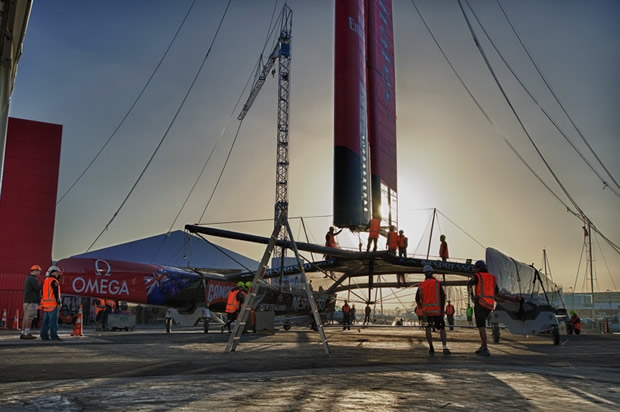
Emirates Team NZ AC72 - first glimpse
Emirates Team New Zealand has today become the first of the teams involved in the 34th America's Cup to reveal their AC72 wingsail catamaran when they stepped the wing for the first time today outside of their base in Auckland's Viaduct Basin.
And what a beast it is...
We've only got these photos from team photographer Chris Cameron to go on but the beam configuration looks similar to Alinghi 5, with an evenly arched main crossbeam while the aft crossbeam drops down at each end allowing the beam to maintain air draft. Also like iare the beams extending diagonally aft back from the mast step to the rear crossbeam together with the same twin dolphin striker arrangement - one beneath the mast step and another beneath the bowsprit.
There appears to be a couple of vertical struts on top of her main crossbeam giving some elevation to a couple of stays leading to the end of the bowsprit.
If anyone has any profound observations about the wing we'd like to hear from them. Obviously - no sign of any foils just yet.
The big launch party for the team will take place this Saturday.
Click on the images to enlarge them...
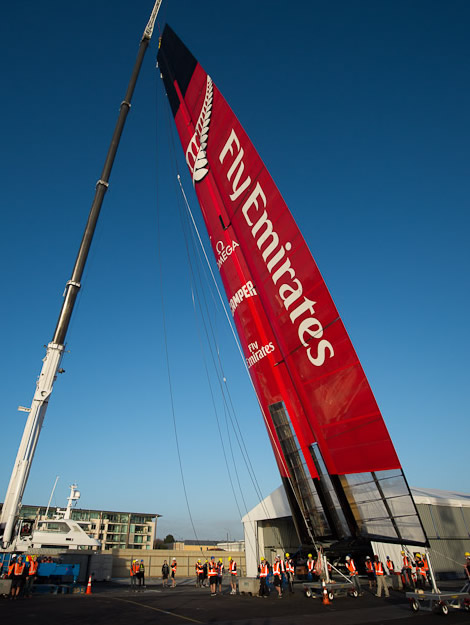

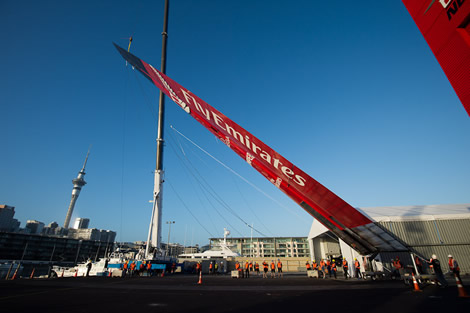
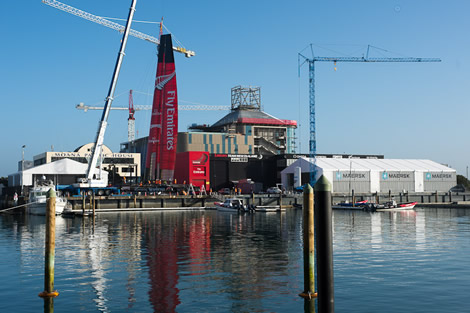
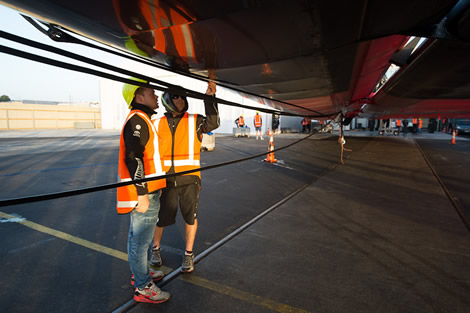
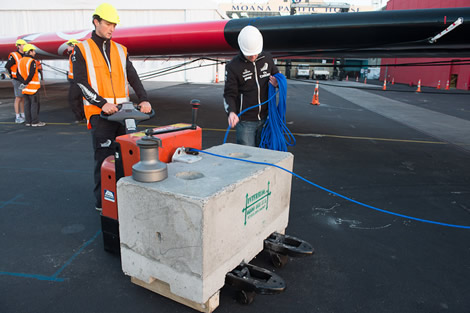







Latest Comments
898568 18/07/2012 - 22:23
Dear James, you are right, the flap chord fraction is between 57 and 60%, which is much more than the 40 to 44% of the C-Class cats. This will lead actually to greater cambers, but not necessarily to greater lift coefficients as it was proven in the wind tunnels. Rémi Laval-JeantetJames Boyd 18/07/2012 - 14:05
A well-informed spy of ours in Auckland confirms that the innovation is indeed in the hidden control arms and notes that the wing has quite a large rear element, compared to the front one. What appears in the photos to be a step may be just a fairing to the flap. The vertical supports may be there to vertically support the bowsprit before the wing is stepped. They are then removed.James Boyd 18/07/2012 - 09:28
Interesting - so there is a step in the wing. I wondered if it wasn't the light/paintjob playing trickswestcoastwilly 18/07/2012 - 08:43
Remi's comments are going to make my observations seem even more low brow but was lucky enough to watch them stitching the pieces together from my office window. The photos don't really do justice to the step up in size from the AC45 - it is an absolute monster. It will be a hell of a challenge to get the boat out of the Viaduct but can't wait to see it unleashed in open water. Pete Melvin is like a kid in a sweet shop when pressed about how the platform will perform.898568 18/07/2012 - 08:35
Hello to everybody, I was the designer of the wing for the french OTIP C-Class in 1990. I had carried out also several wind tunnel tests over single slotted and double slotted wings, especially the Yellow Pages ones. About the TNZ's wing, I can notice 2 major innovations : 1 > They put inside the wing the commands of the flaps (crank, cam, lever arms) to remove the parasitic drag and they probably replace them by internal cam + tracks + bell crank ). Never done before. 2 > They put a step just behind the hinge of the flappino ( second element which controls the curvature transition and the slot gap), probably on to allow a perfect flush fairing of the suction side when the internal cranks have moved. The wing is, aside this, a classical one-slotted wing. Rémi Laval-Jeantet; PhD Aero/hydrodynamicist CEO of FLUXYZ CFD company Rémi Laval-JeantetAdd a comment - Members log in